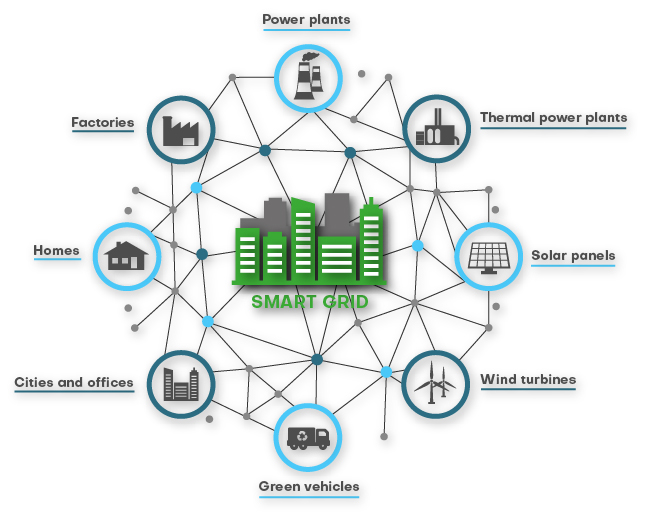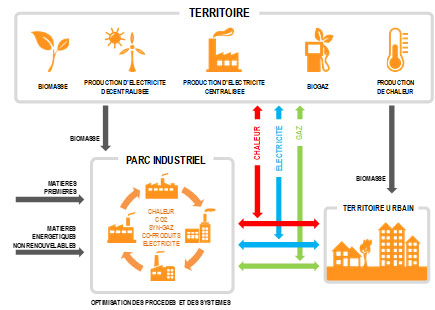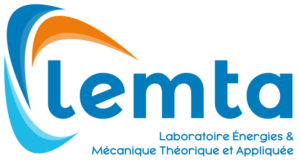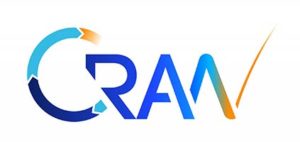RESEARCH
INNOVATION PROJECTS AT ENSEM
VRAM (Power-assisted bicycle-rail)
Is going up the Brabois hill too difficult by bike? The VRAM project is the solution.

Motivation, great inspiration and a light bicycle are sometimes not enough. It is obvious that cycling up to Brabois from the Velodrome remains very complicated by bike. However, student engineers from ENSEM have the solution! In addition to the public transport network, the VRAM project, for “Vélo-Rail à Assistance Motorisée”, could become a real solution for cyclists.
The potential benefits of this new green mobility solution are numerous because, if the case study focuses today on the Brabois hill, many cities around the world could benefit greatly in the future from VRAM. That is why, since its implementation, this project has attracted the attention of many local actors in local development. The project was awarded the “Challenge Ecology and Technology” prize and the “Nancy Jeunes” prize from the city of Nancy. It has also received the support of the Sustainable Development Council (C3D) of the Greater Nancy metropolitan area, the University of Lorraine, and the PDIE de Brabois.

INNOVATION PROJECTS
PROJECTS FUNDED BY GRAND EST REGION “PROJETS PACTE”
Grand Est region actively supports projects initiated by the “Grandes Ecoles” in the region. ENSEM is involved in several major projects.
URBANLOOP
All current urban transport (metropolitan, tram, bus) is based on a common idea dating back to the 19th century: block transport. That is to say, the main idea is to accumulate users in a station before loading them into a block that will run in series through all the stations of the network. The main effect of this model is that in urban situations, the time due to stops at stations is often longer than the journey itself.

The UrbanLoop project is based on a concept where the stations are parallel to the main circuit and the capsules are individual. It will therefore be possible to allow users to travel in continuous flow, individually, securely, without connections and without stops for urban journeys ranging from 0 to 10km.
THE INTERNET OF ENERGY
Energy transition implies a radical transformation of the supply of electrical energy. A consumer can now become a supplier; renewable, intermittent energies pose new challenges that challenge purely centralized management. The new distribution networks will correspond to a set of components where each component produces, stores, and consumes energy locally.
This radical change can only be achieved by using digital technologies to ensure a reliable dialogue between remote components and lead to decentralized management.

The Internet energy project trains students in the new issues raised by energy transition: control, management and optimization of electrical energy from decentralized and bidirectional network architecture.
The originality of this project lies in the geographical distribution of the facilities in the various partner schools. Each installation has several energy sources, different categories of consumers, is instrumented and has its own management system. Like the Internet, there is no global supervisor, but communication between each installation is possible and makes it possible to reproduce the operation of tomorrow’s energy systems.
INNOVATION & TEACHING CHAIR
This project concerns the creation of a teaching and innovation chair “Territory, Industry, Energy – Modelling of Energy Ecosystems”.

In terms of innovation, the chair holder will lead discussions, particularly on the development of multi-scale multi-physical systems simulation platforms (components and processes / eco-industrial park, territory). The innovation component will, of course, be mainly supported by the partner laboratories (LEMTA, LORIA, CRAN, GREEN). The expected impact in training is significant since the Chair should make it possible to develop scientific or generalist training – by integrating economic aspects and non-technological barriers – based on Energy Ecosystems. This training does not exist, as such, at the School today. It will also be an additional asset for the development of our partnership relations (transfer of knowledge to industrialists, student projects).
The funding granted by the Grand-Est Region completes the commitment of the industrial and local authorities involved in the project.
LABORATORIES
ENSEM benefits from the skills of professors carrying out research in six nationally and internationally renowned laboratories.
They provide students with a constantly- updated education this is always linked to progress and innovation.
LEMTA: LABORATORY IN ENERGY AND THEORETICAL AND APPLIED MECHANICS
LEMTA focuses on the rational use of energy, flow control, thermomechanical behavior of materials, biomechanics…
LEMTA (UMR 7563) is a Joint Research Unit of the University of Lorraine and the CNRS.
It is part of the “Jacques Villermaux Research Federation for Mechanics, Energy and Processes” (FR 2863). It is a host laboratory of the Doctoral School “Energy, Mechanics, Materials” (EMMA).
GREEN: ELECTRICAL ENERGY RESEARCH GROUP IN NANCY
GREN deals with electrical energy from its production to its use.
GREEN (Electrical Energy Research Group in NANCY) is a research laboratory of the University of Lorraine.
It is part of the “Energy, Mechanics, Processes, Products” (EMPP) scientific pole. GREEN is part of the “Jacques Villermaux Research Federation for Mechanics, Energy and Processes” (FR 2863).
The GREEN is a host laboratory of the Doctoral School “Informatique, Automatique, Electronique, Electrotechnique, Mathématiques” (IAEM-Lorraine).
CRAN/ NANCY AUTOMATIC RESEARCH CENTRE
CRAN covers a wide range of skills in automation, signal processing, production automation and computer engineering.
CRAN is the main actor in Automation for the Université de Lorraine which ranks 39th in the “Automation & Control” discipline in the Shanghai 2018 ranking. The University of Lorraine thus occupies the second place in France.
LEM3
LEM3 is a Joint Research Unit n° 7239 CNRS – University of Lorraine – Arts et Métiers ParisTech, attached mainly to the CNRS Institute of Engineering and Systems Sciences (INSIS)
In recent years, LEM3 has contributed to the various teaching and research institutions in Lorraine (University of Lorraine, University of the Greater Region (UniGR), IRT M2P (Matériaux-Métallurgie-Procédés), CEA-Tech, the European Valley of Materials, Energy and Processes (VEMEP), MetaFensch platform, Initiatives – Science – Innovation – Territories – Economy (ISITE), CPER 2015-2020, etc.).Its strong regional roots extend to the Greater Region thanks to multiple interactions in terms of teaching, research and industrial relations with Germany, Luxembourg and Belgium.
LORIA: LORRAINE RESEARCH LABORATORY FOR COMPUTER SCIENCE AND ITS APPLICATIONS
LORIA has an international influence in the field of Information and Communication Sciences and Technologies.
The Loria, Lorraine Research Laboratory in Computer Science and Applications is a Joint Research Unit (UMR 7503), common to several institutions: the CNRS, University of Lorraine et Inria.
The Loria is a member of the Charles Hermite Federation, which brings together the three main research laboratories in mathematics and STIC (science and information and communication technologies) in Lorraine. The laboratory is part of the AM2I (Automatics, Mathematics, Computer Science and their interactions) scientific pole of the University of Lorraine.
ELIE CARTAN INSTITUTE IN LORRAINE (IECL)
IECL is one of the most important Mathematics laboratories in France. A reservoir of excellence whose skills feed the school’s courses.
The institute was founded more than a hundred years ago, with the arrival of Élie Cartan as a professor at the Faculty of Sciences in Nancy. There is a long tradition of research in Mathematics in Lorraine, marked by a succession of world-renowned personalities such as Jean Leray, Laurent Schwartz (Fields Medal 1950), Jean-Pierre Serre (Fields Medal 1954), Roger Godement, Jean Delsarte (Bourbaki group secretary until 1962) or Jacques-Louis Lions.
The IECL is a joint research unit (UMR 7502) of the CNRS and the University of Lorraine. INRIA is an important and long-standing partner of the IECL, particularly through the INRIA project teams that we host.
ENGINEER AND DOCTOR
ENSEM benefits from the skills of professors leading research in to six nationally and internationally renowned laboratories.
For our students, this is the assurance of having courses that benefit from advances in research, that are constantly updated and always linked to the challenges of innovation. There are also opportunities for research training in 3A (in partnership with a master’s degree from the University of Lorraine) or for pursuing doctoral studies.
Research Day at ENSEM
ENSEM and its laboratories (LEMTA, CRAN, GREEN, LORIA, IECL, LEM3) organize a research awareness day for second-year students each year.
The objective of this day is to provide future graduates of ENSEM with the necessary information to initiate or complete a reflection on the interest of becoming a Doctor in Engineering and on the way a PhD thesis is conducted.
The day is divided into two parts:
– The morning is devoted to the presentation of the Industrial Conventions of Training through Research (CIFRE) and testimonials from partners and former students who have become Doctors of engineering
– In the afternoon, the school’s laboratories (LEMTA, GREEN, CRAN, LORIA, IECL, LEM3) present their research activities and their experimental facilities. The students also have the opportunity to converse directly with PhD students and researchers from these laboratories.







